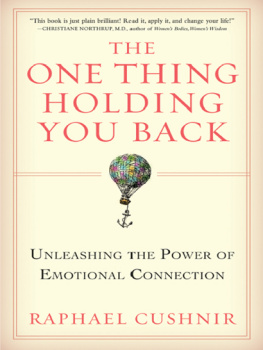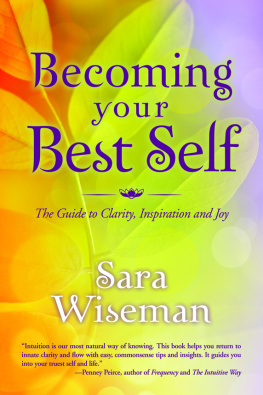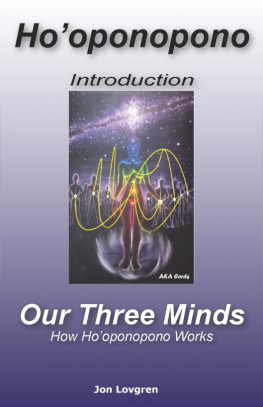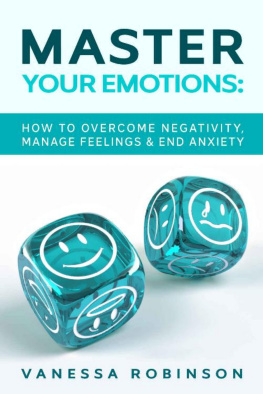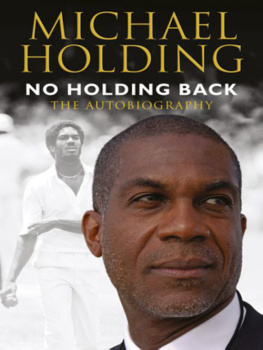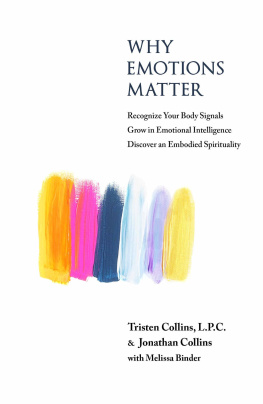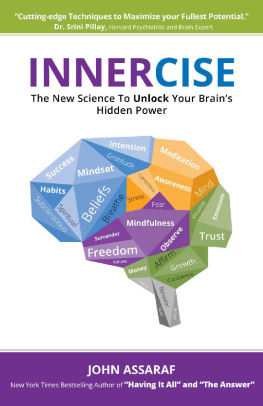E VERYONE WANTS TO SUCCEED. Everyone wants more of something, whether freedom, power, love, fame, money, pleasure, peace, service, healing, growth, or change. Most people want their own unique combination of these goals. Even people who have given up hope or become willing to settle for far less still have secret visions of what their lives might look like, might feel like, if only they were different.
What about you? What do you want? If you already know the answer, if your own definition of success is perfectly clear, this book will help you achieve it. If youre uncertain, confused, or in the process of reevaluating your life vision, this book will help you refine and achieve it.
With life growing ever more complex for all of us, how could one book, one perspective, be equally applicable across the entire realm of human experience? The answer lies not in how each of us is different, but in what we all share.
One of the things we all share is emotion. The same range and capacity for emotion is present in every single person. Emotional neurons are firing constantly in our brains, and emotional neuropeptides are cascading similarly through our bodies. This electrochemical dance occurs from the moment were born till the moment we die. Its as much at play in the private gaze of two lovers as it is in the most sweeping events of human history. Scientists have demonstrated that the same basic emotions of fear, anger, sadness, and joy produce facial expressions recognizable across divisions of race, class, religion, and culture. In all our feverish activity, its been said, were either running toward an emotion or away from one.
This running away from emotions is something else we all share. Depending on context, it may be known as repression, denial, resistance, or stoicism. Part of it is natural and ingrainedwere designed to avoid what we dont like or dont want. Part of it is beneficialmany responsibilities require that we temporarily stave off our emotions in order to focus on the task at hand. But the biggest part of it is learned, and thats where we get into trouble.
Almost everything we learn about feeling and not feeling emotions is unspoken. We pick it up in childhood by observing, and then mimicking, the behavior of those around us. This happens mostly at an unconscious level and is mostly negative.
Ive had this confirmed at virtually every seminar and workshop Ive ever led. Early on, I ask the participants to raise their hands if they received a sound education from their parents in how to experience and understand emotions. No hands go up. Then I ask if such an education was provided at school or religious institutions. Again, no hands. Peer group? Forget about it.
So here, in a nutshell, is our emotional predicament: when it comes to this crucial, unavoidable, and often confounding aspect of our lives, were pretty much on our own. We simply dont know how to deal with our emotions, either when theyre actually arising or in their aftermaths. Nor do we grasp the immense harm done, both to ourselves and to everyone around us, by this lack of understanding.
To be fair, the situation has begun to improve. During the nineties, the term emotional intelligence took hold. This term is usually defined as the ability to monitor, regulate, and obtain information from our feelings. It was popularized in a landmark book of the same name by New York Times writer Daniel Goleman. Since then, emotions have been dragged out of the closet and into the open at progressive schools, institutions, and businesses worldwide. Where it once was taboo, the topic is now generally recognized as a key to effective communication, organization, and even a robust bottom line.
This is a great beginning, and the benefits of emotional intelligence will only continue to spread. But emotional intelligence is just half of whats necessary. The other half, perhaps even more important, is emotional connection.
Emotional connection is the ability not just to recognize an emotion, but to actually feel it. And not just to feel it for a moment, or for as long as its comfortable, but for as long as that specific emotion requires.
This practice is simple and direct. It can be learned and mastered in a short time by almost anyone. Its the key to maximizing all talent and effort. Its the key to making dreams come true. And yet, emotional connection remains the road least traveled.
Why? Both nature and nurture, as previously alluded to, play large roles. But the complete answer goes further than that. To let our emotions run their own course, in their own time, necessitates a radical shift of consciousness. We must overcome a pervasive view that emotions are best kept in check, that they are the enemies of rational thinking, and that to give them fuller reign would lead to anarchy, weakness, or the kind of touchy-feely navel gazing that makes even the most tolerant among us wince.
Do you believe that too? Perhaps just a little? Most of us do, even if we dont like to admit it, and even if weve learned to give lip service to feeling our feelings at Twelve Step programs, in counseling, or somewhere else along the way.
In this book, I challenge the view that emotions are problems, that theyre things to be feared, controlled, or even managed by our higher faculties. I make the case, instead, that emotional connection is the path to our greatest possible wisdom and achievement, no matter what the field of endeavor. I do so, mostly, by appealing to your own common sense and experience.
The first time I shared this approach was in an article for the September 2004 issue of O, The Oprah Magazine. In response, e-mails poured in from all over the world. The general consensus went something like this: Everything youre saying is obvious. Yet somehow Id missed it. More, please.
Its in response to those requests that I set out to write The One Thing Holding You Back. My goal is to provide all the principles and practices you need in order to make emotional connection a regular part of your life. I want to help you put emotional connection to use, not just in general, but also wherever you may be stuck, and to empower any and all of your dreams. In fact, the central message of the book is this:
To whatever degree you arent living your dreams, its because of key emotions related to those dreams that youre not yet able to find and feel. Once youre able, those dreams will begin to come true in one form or another.
This is, no doubt, a bold claim. And I make it in a way thats even bolder than you might think. Im not just referring to personal accomplishment but to the objectives of groups and companies as well. Here are two brief examples that illustrate how emotional connection can become the critical missing link in reaching personal and collective goals.
First, imagine a lonely woman who wants nothing more than a loving relationship but has become gun-shy due to previous rejection. While caution in relationships is always a good thing, in her case its blown up into a paralyzing fear. This unwillingness to feel any possible rejection causes her to bail out on new partners before things ever have a chance to get serious. Therefore, she unwittingly ensures her isolation.

